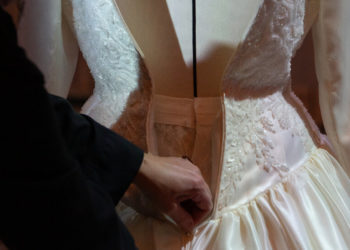The revelation that Donald Trump has demolished the East Wing, with plans to rebuild it at jumbo size with private funds, provoked an initial wave of outrage—followed by a predictable counter-wave of pseudo-sophisticated qualified defenses.
“In classic Trump fashion, the president is pursuing a reasonable idea in the most jarring manner possible,” editorializes The Washington Post. The New York Times’ Ross Douthat and The Wall Street Journal’s editorial board have similar assessments: We should all calm down, put aside our feelings about the president and the admittedly flawed process by which he arrived at this project, and appreciate the practical value of the new facility.
Let’s forget questions of proportion and aesthetics (I could not be less qualified to judge either) and consider the matter solely on the issue of corruption. Trump has funded the project by soliciting donors who have potential or actual business before the government. By traditional standards, this would constitute a massive scandal.
We know this because a very similar scandal occurred about a decade ago. Remember the Clinton Foundation? After the 43rd president left office, he established a charitable foundation to undertake good works: disaster relief, public health, and other largely uncontroversial endeavors.
But the Clinton Foundation became a political liability after reports suggested that it created a potential conflict of interest. Bill Clinton may have retired from elected office, but Hillary Clinton harbored widely known ambitions to run in the future. So the wealthy people and companies that donated to the foundation might have been hoping for access to and gratitude from a potential future president.
Conservatives were not alone in denouncing this arrangement. In August 2016, the Post editorialized that “some donors to the Clinton Foundation may have seen their gifts as means to buy access—and it points to much bigger potential problems. Should Ms. Clinton win in November, she will bring to the Oval Office a web of connections and potential conflicts of interest, developed over decades in private, public and, in the case of her family’s philanthropic work, quasi-public activities.” Similar criticism appeared from the likes of NPR (“I think it contributes to all of the concern about her honesty and trustworthiness,” observed the now-late Cokie Roberts), the Times’ editorial board, me, and others.
Like pretty much any other pre-Trump complaint, all of this sounds quaint today. But the actual facts of the case are at least as damning. The solicitations for the $300 million ballroom (as of press time—the cost keeps rising) are being made not by a candidate but by a sitting president. The money is going not to charity but to a public project that will, in part, underwrite Trump’s luxurious lifestyle. (Imagine if the Clinton Foundation had been building gold-embossed ballrooms for Bill and Hillary to entertain guests in!) While the Clinton Foundation disclosed all its donors, Trump has kept many of his ballroom donors secret.
The greatest difference is that Trump’s moves to benefit his friends and hurt his enemies are out in the open, which makes the quid pro quo element far cruder. If donating to a Clinton charity was like buying your date a nice dinner in the hopes of getting lucky, donating to a Trump charity is more like bringing a fistful of cash to a brothel.
The Clintons’ conflict of interest drove waves of skeptical coverage and hostile commentary. This concern has yielded barely a footnote in the Trump-ballroom story. The Post brushes off the problem in a clause (“Though the fundraising for the ballroom creates problematic conflicts of interest, two examples validate Trump’s aggressive approach”), later noting, almost in passing, that the donors include the Post’s owner, Jeff Bezos. Douthat and the Journal’s editorial page likewise dispense with the conflict issue in a sentence.
It may well be true that concerns about the corrupting effect of these donations are just too slight against the backdrop of a presidency that has obliterated the wall between public policy and personal gain. I will concede that the East Wing demolition is not the worst thing Trump has done. It may not even rank among the top 1,000 worst things he’s done.
But the fact that one of the biggest scandals of the Clintons’ careers hardly warrants a harrumph now shows how low the standards of behavior have fallen in Trump’s Washington.
I sympathize with the mainstream media’s inability to properly capture the breadth of Trump’s misconduct. The dilemma is that holding Trump to the standards of a normal politician is impossible. The Times would have to run half a dozen banner-style Watergate-style headlines every day, and the news networks would have to break into regular programming with breathless updates every minute or so. Maxing out the scale of outrage has the paradoxical benefit of allowing Trump to enjoy more generous standards than any other politician has.
Still, although holding Trump accountable to normal expectations of political decorum may be impossible, surely we don’t need to praise him for merely committing normal-size scandals. The people losing perspective here are not the ballroom’s critics, but its defenders.
The post The Ballroom Blitz Should Be a Bigger Scandal appeared first on The Atlantic.




